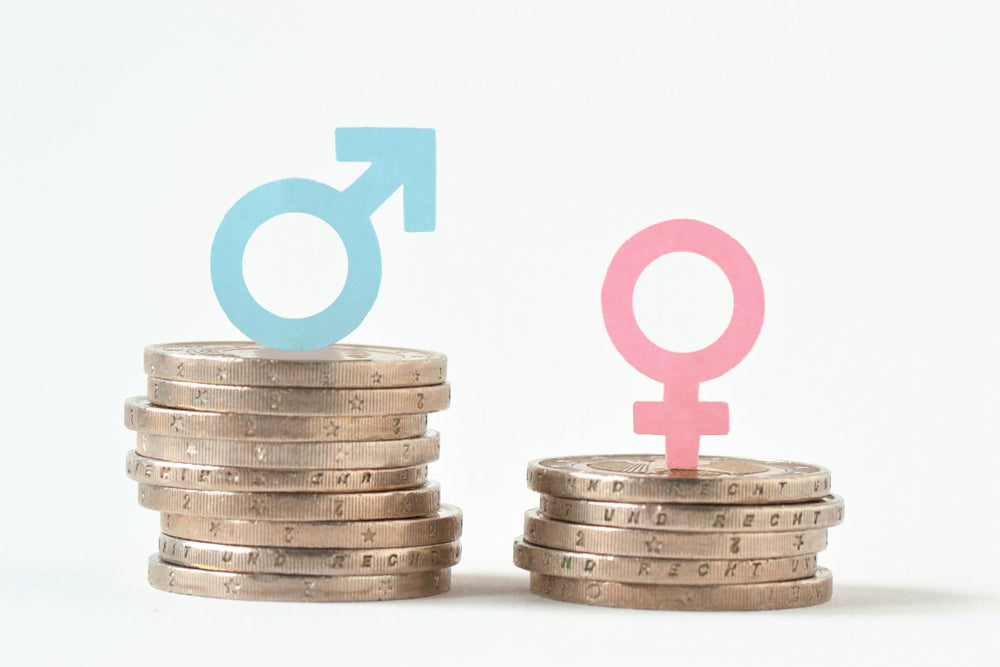Can you believe that the gender wage gap STILL exists? It prevails in some way or another in every country in the world - even in Canada. Before we dive into this issue, it is important to acknowledge that gender is viewed on a spectrum, and much of the research done to date focuses on gender as a binary construct (i.e. women and men). According to the research to date, the wage gap impacts women negatively in many ways, and it is even greater for women within the LGBTQIA+ community, for Indigenous people, and for racialized and/or recent immigrants.
How Is the Wage Gap Measured?
There are three ways that the gender wage gap is typically measured; which are by comparing genders in terms of:
- Annual earnings of all workers (full and part-time).
- Annual earnings of full-time workers only.
- Hourly pay of full-time workers.
This last one will be my focus — as it takes into account the dual burden of women who are working a full-time job, and, more often than not, also taking on significant family responsibilities.


Photos:
1- Unsplash via Standsome
2- Unsplash via Brook Lark
A Bit of Canadian History
Research depicts that the gender wage gap originates from the old-fashioned perspective of gender roles – you know, the outdated idea that the husband brings home the money and the wife prepares dinner, tends to the house, and raises the children. During WWI, women took over a majority of the jobs of men that went to war. However, they received much lower wages for the same work. Following the war, women were forced out of their employment until the Great Depression of the 1930s, when they were encouraged to rejoin the workforce. In 1998, the wage gap sat at 18.8% in Canada —- with men making an average of $5.17 more per hour. By 2018, it had narrowed to 13.3%, with men making $4.12 more per hour. Today, while women have been working the same jobs as men for decades, the wage gap still persists.
What Contributes to the Wage Gap?
- Women-dominated fields of work tend to be lower-paid than men-dominated fields.


Photos:
2- Flickr via Miguel Abad
3- Flickr via D.Dorma
- More women work part-time than men.
Why is this the case? Perhaps the most common reason is that there is limited affordable childcare available, and women often take on the majority of the domestic work (like caring for children), so they are unable to take on a full-time position.
The Gap Within the Wage Gap
Some subgroups of women experience an even more significant wage gap due to intersectionality. The information below is measured from the comparison point of Caucasian (non-racialized) men.
Indigenous Women
The wage gap for Indigenous women as compared to non-indigenous men is 35%! There is also a pay gap between Indigenous and non-Indigenous men. This varies significantly from region to region as well.
Women of Colour
The wage gap for racialized women is 33%, according to the 2016 Canadian Census.
Immigrant Women
In 2015, the Canadian immigrant wage gap for women was 23.2%. When comparing immigrant men to non-racialized men, the gap was slightly lower at 19.2%.
Transgender Women and Non-Binary Individuals
There is limited research to indicate the current wage gap for transgender women and non-binary individuals. However, a study conducted in 2011 indicates that around half of the transgender community earns $15,000 a year or less than cisgender individuals, meaning a clear wage gap does exist.
If this ongoing problem continues to narrow at such a slow rate, it is reasonable to assume that it will be a long time until it disappears completely. There are so many income disparities that exist in Canada — and you guessed it — the pandemic has been hitting those with a lower socioeconomic status even harder.











